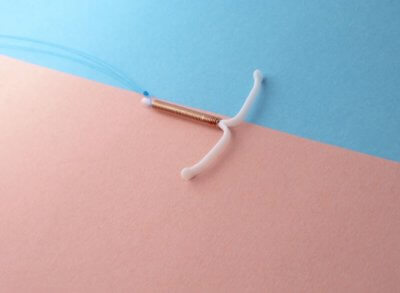Don't wanna be here? Send us removal request.
Text
3 notes
·
View notes
Text
The Impact of E-Cigarette Use on Our Children
What parents need to know about vaping
“Vaping,” is commonly used to describe the use of electronic cigarettes. Kids are vaping. It has gained ominous notoriety in recent months. According to the CDC, there have been over 2,500 vaping related lung injuries in the past year. Cases have come from all over the United States. Some cases have been so severe that they have required hospitalizations in intensive care units. Sadly, some cases cause death.
What do parents need to know?
What should alarm parents is the use of electronic cigarettes has massive appeal to children in high school and even middle school. The American Lung Association has reported that as many as 5 million adolescents use e-cigarettes. That staggering figure amounts to 20% of our youth. According to the Surgeon General, more high school students use e-cigarettes than regular cigarettes. Even more surprising, e-cigarette use is more popular among high school students than it is among adults.
Electronic cigarettes have many different names
They are formally known as electronic nicotine delivery systems (ENDS). Other names include e-cigs, e-hookahs, vapes, vape pens, JUULS, personal vaporizers, and mods. The devices usually contain a cartridge, a heating source, a power source, and a mouthpiece. The cartridge typically has a reservoir that holds a liquid that contains nicotine, flavorings, and other chemicals. The act of puffing triggers the battery-powered heating device. This vaporizes the “e-liquid” or “e-juice” allowing the user to inhale the aerosol.

Photo by Judeus Samson on Unsplash
Is nicotine dangerous?
The contents of the inhaled aerosol contributes directly to the dangers of vaping. The most obvious ingredient is nicotine. The perception by a large number of e-cigarette users — young and old — is that vaped nicotine is somehow less dangerous than nicotine inhaled by traditionally smoked tobacco. This is false. Nicotine is highly addictive and harmful, no matter its delivery system. The effect of nicotine is particularly dangerous to the developing brains of children and young adults. The brain development continues until 25 years of age.
What else are they inhaling?
There are other alarming chemicals found in e-cigarettes detrimental to one’s health. Propylene glycol is a chemical commonly used to make paint solvent. Ethylene glycol and diethylene glycol are chemical compounds used to make antifreeze and linked to lung disease. Nitrosamines, acetaldehyde, and formaldehyde are known carcinogens. Acrolein is an herbicide used in weed killers that can cause irreversible lung damage. Cadmium, nickel, tin, and lead are other heavy metals that are commonly found in these e-cigarette reservoirs. Inhaling these ingredients is of grave concern. Unfortunately, the Food and Drug Administration regulation is lacking, allowing these products to be misused.
How easily can a teen buy E-cigarettes?
E-cigarette devices can be purchased online in just one click. Vaping products are available in shops in your neighborhood. Physical stores are required to check ID. Buyers must be 18 years of age to make these purchases. Kids know which stores do not follow the ID check policy. Online vendors are not held to that standard, however.
The appeal of e-cigarettes to our youth is concerning
Vaping devices are openly marketed to teens and young adults. Advertisements for electronic cigarettes appear in television programs and movies geared toward adolescents. Ads on the internet, social media, and printed magazines. The various flavors resemble common candy flavors marketed to children: chocolate, bubble gum, and peppermint. The more sophisticated teen gravitates to piña colada, java jolt, or peach schnapps. Some research suggests the light-hearted nomenclature allows teenagers to forget they are inhaling nicotine. They may not be aware of the presence of the other ingredients as manufacturers are not required to list the contents of e-cigarettes. Few regulations govern.
Mods are easy to hide

Photo by Fallon Michael on Unsplash
These devices are also easy to conceal from parents and teachers. Unlike traditional cigarettes, there is no lingering scent or trace of smoke. The devices are difficult to police as they can resemble flash drives, pens, car key fobs, and even medical inhalers.
Long term risks
The vaping industry is nascent. The long term risks are inconclusive. However, the acute risks of these devices are transparent. Nicotine delivery systems — electronic or traditional — have no place among our youth. The American Academy of Pediatrics cites that second hand “vapor,” like second-hand smoke, is harmful to growing lungs. The addictive properties of these products impact developing brains. Teenage e-cigarette users have a higher risk of engaging in traditional cigarette use as well as marijuana and alcohol use. According to the CDC, nicotine is toxic to developing fetuses and is harmful to pregnant women.
Devices can explode

Photo by Jeff Kingma on Unsplash
Vape devices are poorly regulated. Defective devices have exploded, resulting in harmful burns and house fires.
Vaping is a clear and present danger for our children
The dark cloud of “vaping” is a clear, present, and avoidable danger to our youth. As parents and healthcare providers, we have to push back on their use. We must have honest conversations with our children. It is important to educate them on how easy it is to become hooked on tobacco, no matter the form. It is crucial to inform them about what we know is actually in those unregulated mint “vapes” and chocolate JUULS. We must also discuss the potential for lacing with illegal and illicit drugs like marijuana. Second-hand vape carries the same risks as second-hand smoking. We implore our parents and other household members to not indulge around our children. Blog By: Dr. Agboola O. Fatiregun Blog Photo By: Nery Zarate on Unsplash
1 note
·
View note
Text
Children Teach Parents the Value of being Fully Present at Home
Parenting with intention helps this father grow
It’s 10:00 pm. My alarm is set for 4:45 am. Scrambling to wrap up last-minute work and pack my bags for an early flight, I get two text messages. My nine year old wants to read a book together. My fourteen-year-old wants me to watch Zion Williamson’s NBA debut. Exhausted and stressed-out, I pause. I realize my fortune. My children want to spend time with me.
Is balance attainable?
Work-life balance. The elusive challenge of parenting. Our desire to be a loving spouse and a supportive parent is on a perpetual collision course with our drive to run successful companies. We want to coach our kids’ soccer teams and run the next board meeting. We must pick up the daughter from ballet and write tomorrow’s PowerPoint presentation.
Where is my mind?
Often, I find myself at home, but I am not really there. My physical body is present, but my mind is elsewhere. I sit on the couch, but my thoughts are miles away processing the problems of the day. My ears listen to my family talk, but my fingers type a response to a perceived work crisis. I want to be physically and mentally home, fully present in the moment.
It should be easy.
It is not.
Where is my mind?
Where is my mind?
Way out in the water
See it swimmin’
Frank Black, The Pixies
My kids show me the path forward
Lucia, book in hand, wanders into my room. One look at her face, and I toss my to-do list aside. Her book is Ugly by Robert Hoge, a story of a boy born with a large, disfiguring tumor on the center of his face. His mother would not look at him for the first week of his life. His legs had to be amputated. Despite his challenges, he became a successful journalist and motivational speaker. She is moved by the boy’s bravery and courage. I am amazed by her insight and thoughtfulness. I kiss her good night. I walk to the living room to check on my son. He is excited about watching Zion Williamson. Overcoming an injury, tonight is Zion’s first game back. Max is inspired by his talent, work ethic, and especially his accomplishments at such a young age. We sit together, father and son, and watch the game. He talks. I listen. We connect.
What we tell ourselves and what we do
My children are my priority. Their words matter. Our time together is the most important thing in the world, but there is one more email I need to send.
One more phone call to make.
One more problem to solve.
I want to parent with intention
My kids are growing up too fast. In a few short years, they will go off to college. Work will still be there tomorrow. My kids are here now. The Pixies’ song taunts me, “Where is my mind, way out in the water, see it swimming?”

Photo by Robin Schreiner on Unsplash
I must make a conscious decision to be fully present. Physically, emotionally, and mentally. Close proximity is not enough.
Do they need me or do I need them?
Relationships need nourishment to thrive. They need to be fed with love and attention. We focus on the child benefiting from us to grow and flourish. Tonight, I set all aside to be with my kids. Lucia taught me that Robert Hoge did not dwell on his shortcomings. Max showed me that Zion did not give up after his injury. All of us can overcome our imperfections. Lessons learned. In this moment, the one who evolved from being fully present was me.
Thank you to P.S. I Love You for publishing this article on Medium.
Blog By: Dr. Jeff Livingston Blog Photo By: Juliane Liebermann on Unsplash

0 notes
Text
Better Care is Needed for Postpartum Depression
A doctor learns to ask the right questions to help patients get the help they deserve.
A nurse
She was a nurse. I worked with her daily. She was my friend and also my patient. Happily married. Perfect pregnancy. Easy delivery.
How did I not recognize she was suffering from postpartum depression?
She could not get out of bed. Although madly in love with her baby, dark and dangerous thoughts filled her head. Each day she forced herself out of bed. She cried daily. The stress of hiding her depression from her husband was tearing her marriage apart.
One year later, she confessed. During her annual exam, she revealed all that she had been through. Struggling in silence. Sharing with no one. She was miserable.
I am the doctor she trusted. Once I knew of her illness, she got better. Why did I not catch it sooner?
I didn’t ask. She didn’t say.
I’m sorry.

Photo by Thibault Debaene on Unsplash
A teen mother
She was a 17 years old child. She and her newborn lived with her mother and mom’s four other children. She grew up without a father. The father of the baby was long gone. Her house was full of family, but she was living all alone.
Four years later, she is pregnant again. She shares with me her fear of having postpartum depression again. She cried as she explained the terrifying thoughts of hurting her baby that flooded her mind after her delivery. She loved her baby. She asked what was wrong with her for thinking this way.
All the risk factors for postpartum depression were right there in front of me four years ago. How did I miss it?
I didn’t ask. She didn’t say.
I’m sorry.

Photo by Dane Deaner on Unsplash
A high-level executive
She was a senior vice president of a large tech company. After years of infertility treatment, she and her husband got pregnant. Always the overachiever, she was not pregnant with one baby. She had twins. During her six-week postpartum visit, she told me she was getting divorced. I was surprised. On the surface, they seemed like the perfect couple. Was postpartum depression a factor?
I didn’t ask. She didn’t say.
I’m sorry.
Depression has many faces
One patient’s husband had an affair. Another struggled with her teenager’s rebellion. One lost her job for not showing up for work. Another couldn’t pay her bills. Another repeatedly came to the office for various vague abdominal pains.
I didn’t ask. They didn’t say.
I’m sorry.
Postpartum depression is real
One in seven women suffers from postpartum depression. I had been treating it throughout my career. I caught the easy cases. I helped them, and they got better. The world of women’s health has started paying more attention to the 4th trimester. I realized I was missing the harder to spot cases. I had overlooked the subtle clues that were there along. I had underestimated the efforts patients would take to hide their mood disorder. Shame, fear of being judged, and embarrassment forced those suffering from postpartum depression to hide alone in the dark.
We implemented universal screening
We added universal screening for postpartum depression to our office protocol. The Edinburgh Postnatal Depression Scale (EPDS). Ten questions. Five min. This simple tool made it safe to step into the light. Each patient fills out a simple questionnaire. The score is not diagnostic, but the questions open a window and an opportunity for dialogue. The tool triggers me to ask the right questions. Five min can change someone’s life. My eyes are now open to the prevalence of postpartum depression and the subtle ways people hide it. It also revealed to me that these cases were there all along. They wanted to talk, and I wanted to listen. I just didn’t ask, and they didn’t say.
A new approach
Universal screening opened a window and shed light on postpartum depression. I have changed my approach. I am asking the right questions. Now we are talking. Patients are speaking up.
I asked. You answered.
I’m so thankful.
You are not alone.
Never be afraid to talk about postpartum depression.
https://macarthurmc.com/postpartum-depression/
Thank you to Candour for publishing this article on Medium.
Blog By: Dr. Jeff Livingston Blog Photo By: Photo by Ani Kolleshi on Unsplash

0 notes
Text
Routine Prenatal Testing
Prenatal tests are medical tests you get during pregnancy. They help your health care provider find out how you and your baby are doing. https://youtu.be/4Zkt7213UPQ Video By: Dr. Angela Yu
0 notes
Text
Plan B Is Not an Abortion Pill
Understanding emergency contraception
Dear politicians, health policymakers, reporters, and highly-opinionated social media friends. Plan B is not an abortion pill. Stop calling it that. Plan B is the brand name of one form of emergency contraception. RU486 (Mifepristone) is a medication used to induce abortion. Plan B and RU486 are not the same medication. Emergency birth control prevents pregnancy. Abortion medication terminates a pregnancy. Our views on abortion vary. We must understand what we are arguing about. Our country's public policy and heated Facebook debates should at least be based on facts. Emergency contraception is completely different than a medical abortion. In fact, emergency contraception prevents the need for abortions while preventing unplanned pregnancy.
What is emergency contraception?
Emergency contraception (EC) contains progesterone, a hormone produced naturally by the ovaries. It is often called “the morning after” pill. Common brands, such as Plan B, are available over the counter without a prescription. EC is formulated with a high dose of progesterone. This hormonal blast disrupts, delays, or prevents ovulation. High dose progesterone also thickens the cervical mucus creating a toxic environment for sperm. It will not terminate an already established pregnancy.
It’s not called Plan A
Over-the-counter emergency birth control should be used within 72 hours of unprotected sex. Presciption EllaOne (ulipristal acetate) can be taken up to 5 days after unprotected sex. The earlier it is used, the better it works. EC decreases the risk of pregnancy by 70–80% (ACOG). It is not a great primary form of contraception. Emergency contraception is called Plan B and not Plan A for a reason.
Will it cause an abortion?
Progesterone does not cause abortion. Emergency contraception decreases the risk of pregnancy by inhibiting ovulation. If conception has already, then it is too late for emergency contraception. Once pregnancy occurs, the ovary forms a type of ovary cyst called a corpus luteum. It produces progesterone to support the growing pregnancy. Taking emergency contraception will only add more progesterone to support the developing fetus.
What are the side effects?
Side effects include nausea, vomiting, headache, breast tenderness, abdominal pain, dizziness, and fatigue. Those side effects will subside within 1–2 days after treatment. Because EC disrupts ovulation, irregular bleeding is common. Users may experience menstrual changes, including spotting, heavy bleeding, or altered timing of the next menstrual period.
What works best?

Photo by Reproductive Health Supplies Coalition on Unsplash A copper intrauterine device (IUD) is the most effective form of emergency contraception. An IUD is a small T-shaped device inserted into the cavity of the uterus. It should be placed within 72 hours of unprotected intercourse. It prevents pregnancy by inhibiting sperm’s ability to swim towards the egg. It reduces the risk of pregnancy by 99% and provides effective birth control for up to ten years.
Short term solution
Emergency contraception is a safe option to prevent pregnancy after having sex without a condom or birth control. Other much more effective forms of contraception are available to help prevent pregnancy over the long term. Emergency contraception also does not protect against HIV or other sexually transmitted infections.
What is the abortion pill?
The abortion pill is a misnomer. Two medications, when combined, can terminate a pregnancy. RU486 (Mifepristone) competes with progesterone at the receptor sites. After taking RU486, a second medication called Misoprostol is given to induce uterine contractions. The combination of these two medications is used in abortion clinics for medical abortions. RU486 is highly regulated and only available under medical supervision at a clinic that offers abortion services.
Thank you Sexography for publishing this article on Medium.
Blog By: Dr. Jeff Livingston Blog Photo By: Reproductive Health Supplies Coalition on Unsplash

0 notes
Text
Maternity Belt Approved by Dr. Angela Yu
Why wear a pregnancy belt during your pregnancy? A pregnancy belt helps relieve prenatal pain around hips, pelvis, and back. It can also reduce swelling in the hands, legs, and feet by relieving back tension and associated stress. And most important It can help reduce spinal pressure by effectively supporting excess pregnancy weight in the belly. https://youtu.be/AWQ-x3HLf8Y
Check Out "Jill&Joey" Maternity Belt: https://amzn.to/2ZaTpdJ
Video By: Dr. Angela Yu
The Amazon links used are tied to Amazon.com Proceeds generated are donated to the Irving ISD Teen Parenting program, a drop out prevention program for students who are pregnant or parenting.
0 notes
Text
Never Feel Ashamed or Afraid to Speak up About Postpartum Depression
We all must pay attention to get women the help they deserve
Postpartum depression is real. We can no longer ignore perinatal depression and anxiety disorders. Our moms deserve better. Moms suffering from postpartum depression must come out of the shadows and get the treatment they deserve. US maternal morbidity and mortality is now a hot topic. Physician and nurse leaders across the country are focused. Few are talking about the disparity in care and attention to maternal mental health. I saw an opportunity to make a difference
A nurse on a mission
When I started this journey to address the mental health of the moms in our community, a well-respected physician with deep roots in community service told me I was asking the right questions but did not have the answers. He said, “you can’t fix a problem until you understand it.” He was right! The disconnect between obstetric care and behavioral health specialists was rampant. The availability of resources to the uninsured and those on Medicaid was limited and poorly organized. One in seven women suffers from postpartum depression. Almost half go undiagnosed and untreated. We could no longer offer excuses for ignoring this issue. With a team of nurses and physician supporters, we set out to build a program to identify women at risk for mood and anxiety disorders in the perinatal period. While still a work in progress, we have an excellent basis for families to get the help they need. We want women to know that they are not alone. Help is available to get them through the dark.

Photo by Anthony Tran on Unsplash
Postpartum depression can occur anytime
Postpartum depression is a misnomer. Perinatal mood and anxiety disorders can occur anytime from conception to one year after the delivery of a baby. These disorders are quite distinct from the baby blues. The Baby blues is a common issue occurring in 50–80% of women and peaks between postpartum days 2–14. The baby blues are related to fluctuating hormones and lack of sleep. Although new moms are concerned when they openly sob at a TV commercial, baby blues will resolve without treatment. Perinatal depression is much darker and debilitating. A mom feels unable to function for an extended period. Women need to know that when certain symptoms are present, it is time to talk to someone. These include: crying spells, feeling sad, feelings of hopelessness, and feeling guilty. Some may express a lack of happiness or feel the absence of bonding with the baby. Some may have feelings of hurt yourself or your baby. All of these symptoms indicate it is time to seek medical attention. Help is here. You are not alone.

Photo by Yuris Alhumaydy on Unsplash
The thoughts in moms head prevent the help she needs
Shame, guilt, and feelings of inadequacy prevent moms from reaching out for help. Moms fear judgment. They wonder “what is wrong with me” for not feeling blissful over the birth of their child. They fear their family will judge them. Others fear they may lose their baby if they express their true feelings out loud. Some moms have intrusive thoughts. She becomes afraid of them. She needs to know that negative thoughts do not necessarily equal behavior. Help is available to manage these thoughts. We want moms to know we want to take care of her. We want to see her with a happy, healthy family. Our goal is to help her succeed. We do not want women to be afraid to speak out and ask for help. We should be as comfortable talking about depression and anxiety disorders as we are about other pregnancy complications such as gestational diabetes or pre-eclampsia.
Moms life is at stake
Suicide is the leading cause of death of new mothers in the first year postpartum. Infants of mothers suffering from perinatal depression are at increased risk for impaired development, poor communication skills, and future mental health problems. Perinatal depression is not a woman’s problem. It is a family problem. Everyone suffers. We must help women feel safe to come forward and get the help they deserve. Every life matters.
Depression is just the tip of the iceberg
Perinatal anxiety is another important aspect of mental health for new moms. Anxiety is something we have historically written off as “normal” for a parent. Most moms worry over their children, their husbands, and their homes. However, for those with an anxiety disorder, worry becomes consuming and all-encompassing. Panic attacks may be frequent, leaving mom to feel she has no control. Panic attacks can be terrifying because of the physical symptoms that occur, racing heart, sweating, chills, and chest pain. These symptoms lead to a constant sense of doom or failure.
Post Traumatic Stress Disorder can occur after delivery
A woman can experience Post Traumatic Stress Disorder after having a baby. This concept surprises some. After all, no one’s been to war or been attacked by a stranger. PTSD is real for these mothers and their families. Childbirth does not always go according to plan. The birth may not live up to the expected birth plan she had imagined. The beautiful delivery experience may have turned tragic or life-threatening? Emotional and mental turmoil is real for a mom who almost died from postpartum hemorrhage or the dad who almost lost his wife.
There is hope for those suffering
Moms and their families need to know that they will get better with help. The type of help needed may be different for everyone. Many benefit from a no-judgment zone support group where a group of moms can get together and talk. Others may benefit from medications to help control symptoms. Whatever help looks like, the first step is reaching out and communicating your feelings. Available resources include mom groups on social media and in-person counselors, psychiatrists, and community resources for help with job searches, food, and clothing.

Photo by Ben White on Unsplash
You are a priority for us
We are raising the bar and setting high expectations for moms. We hope other hospitals and medical groups will also follow this path. Implement universal screening programs for perinatal depression and anxiety. Provide education programs to nurses and community physicians. Provide education during routine prenatal care. Build community support groups through social media. Remove the fear. Help these women come out of the shadows. Let women suffering from perinatal mood disorders know it is safe to seek help they deserve.
This article was cowritten by Dr. Jeff Livingston and a dear friend of MacArthur Medical Center: Angie Van Valkenburg, BSN, RNC-OB - Supervisor, Labor and Delivery at Texas Health Resources Harris Methodist Hurst, Euless Bedford.
Get Help Today: Call THR Behavioral Health at: 682–236–6023 or visit the THR Perinatal help website. Blog Photo By: Markus Spiske temporausch.com

0 notes
Text
Morning Sickness
Dr. Angela Yu Explains the basics of nausea and vomiting during pregnancy. Morning sickness can occur at any time of the day or night and is one of the most common pregnancy symptoms.
Click To View
https://youtu.be/T6XBN1gGxpA
0 notes
Text
Is It Normal To Itch All Over In Pregnancy?
“My hands itch. My feet itch. Even my hair even itches.”
We hear these words from pregnant women. Itching in pregnancy is very common. Many pregnant women stress out, wondering if itching is normal or a sign of danger for the baby.
Most itching in pregnancy is normal and harmless.
The expanding belly stretches the skin, which triggers dryness and irritation. Although annoying, this itching is common and not harmful.
Here are some tips to help with calm the itch:
Don’t scratch! It is tempting, but it will irritate the skin even more.
Wear loose clothing — natural fabrics like cotton are preferable.
Moisturize often. Use fragrance-free and colorless lotions/balms/butter.
Take a bath. Use cool water, or take an oatmeal bath.
Sooth. Calamine lotion and Vitamin E oil can be very soothing.
Consider a humidifier. This can keep the skin from drying out.
What is PUPPPs (pruritic urticarial papules and plaques of pregnancy)?
PUPPs is a common pregnancy rash that causes itchy red patches that appear around stretch marks. The rash can spread to the thighs, legs, and arms. PUPPPs typically occurs toward the end of pregnancy when the enlarging abdomen is stretching the skin. This frustrating condition is not harmful to your baby. It will resolve almost immediately after giving birth. Topical steroid cream may provide some relief.
Intrahepatic Cholestasis of Pregnancy
Cholestasis of pregnancy is a serious and often overlooked complication of pregnancy. This liver condition results from chemicals called bile acids. Bile acids usually flow from your liver to your digestive system. In cholestasis, they build up in the body and deposit under the skin. These deposits lead to severe itching. Women with this cholestasis typically complain of unrelenting, total body itching as cholestasis is not contained to one area of the body. The miserable itching tends to be worse at night and can cause difficulty sleeping. Your Obgyn will monitor the pregnancy closely as cholestasis is associated with an increased risk of stillbirth.

Photo by Hu Chen on Unsplash A medication called Ursodiol may be prescribed to decrease bile acid levels and relieve the symptoms. This medication does not reduce the overall risk to the pregnancy. Delivery is usually recommended prior to the due date to keep the mom and baby safe. Blog By: Dr. Andrea Arguello Blog Photo By: Ignacio Campo on Unsplash
0 notes
Text
What You Should Do to Stop Sex From Hurting After Menopause
Tips to fix vaginal dryness for good
Sex does not have to hurt
Pleasurable sex after menopause is within your grasp. Vaginal burning and irritation after sex are not acceptable. Insertion of the penis should not feel like something is tearing. Penetration should not feel like sandpaper. These are classic symptoms of vaginal dryness and vulvar atrophy. You do not have to live with it. Painful intercourse, dyspareunia, is a complex issue with many causes. We will focus attention on vaginal dryness, a condition affecting 50–70% of women after menopause. You do not have to ignore vaginal dryness.
Doctors should ask, and patients should speak up
Both doctors and patients have opportunities to change the perception of postmenopausal intercourse pain. Both parties recognize menopausal symptoms like hot flashes. Vaginal pain, vaginal dryness, and sexual issues often get missed or ignored. Doctors don’t always ask. Patients don’t always tell. Both should improve. Doctors and patients must overcome the misconception that the physiological genital changes are an unimportant and unchangeable aspect of aging.
How do I know if I have vulvar-vaginal atrophy
The medical term for postmenopausal dryness is vulvar-vaginal atrophy (VVA). No specific tests are needed. The first step in making the diagnosis is asking the right questions. Symptoms include inadequate lubrication, pain during insertion, post-coital irritation, vaginal burning, or inhibited ability to achieve orgasm. Some may experience frequent urinary tract infections or painful urination after sex. Some may experience discomfort with exercise, especially bike riding.
What causes atrophy?
Estrogen is a hormone produced by the ovaries. Hormone production decrease as one approaches menopause. The ovaries stop producing hormones at menopause. The cells lining the vagina are sensitive to estrogen. Low estrogen decreases blood flow to the vagina. When deprived of estrogen, the cells thin out and provide less moisture.
What causes a drop in estrogen?
Menopause
Breastfeeding
Surgical menopause (removal of the ovaries)
Medications such as Lupron, antidepressants, and antihistamines
Chemotherapy and radiation for cancer treatment
What does a lack of estrogen due to the vagina?
The dropping hormone levels cause the tissue lining the vagina to thin and lose elasticity. The labia majora flatten out, the labia minora shrink, and the hymenal remnants retract. The vaginal length may shorten. The vaginal walls narrow and become less elastic and stretchy.
Symptoms of vaginal atrophy
Sexual discomfort (Dyspareunia: pain, irritation, or bleeding
Indequate vaginal lubrication during sexual stimulation
Vaginal dryness
Frequent bladder infections
Inhibited ability to achieve orgasm
Frequent urinary tract infections
Pain during urination
Vaginal discomfort with exercise
Slippery when wet

Photo by Skitterphoto
Sexual Lubricants are your best friend
The first step is to invest in a sexual lubricant. Buy a small bottle of a few different brands to test what works for you. Not all lubricants are the same. Most lubricants available at a local pharmacy are water-based. Water-based lubricants are the safest for use with condoms to prevent sexually transmitted infections. They do not break down latex in condoms or sex toys. Water-based lubricants dry out quickly, making them suboptimal for postmenopausal women.
Try a silicone-based lubricant
For monogamous couples at low risk for sexually transmitted infections, a silicone-based lubricant may be more effective and pleasurable. Silicone-based lubricants stay slippery longer avoiding the frustration of rapid drying and messiness of reapplication. Silicone-based lubricants will break down latex condoms or latex in sex toys. Penchant Premier is a great product that comes in tasteful and discreet packaging. Avoid products with Parabens or Glycerin. These chemicals are irritants for some users. Avoid flavored or heated lubricants at first. Apply lubricant to the vagina, clitoris, and penis before insertion. Make it a part of foreplay. This simple trick can improve sexual pleasure for many postmenopausal women.
Foreplay, foreplay and more foreplay
Communicate your needs to your partner. Many women require more attention to foreplay to achieve stimulation. Better stimulation leads to more natural lubrication and an increase in vaginal elasticity. Your partner may be unaware of the physiological changes with menopause. Do not be afraid to communicate your needs. What worked for both of you in the past may need to change. Do not be afraid to teach your partner. Speak up and communicate your needs. Menopause is an excellent opportunity to talk about sex with your partner and revitalize your relationship.
Take your vagina to the gym
There are a variety of medications that can help treat vulvar vaginal atrophy. Each medication works differently, but all have the same basic effects of bulking up the cells lining the vagina. Bulked up vaginal cells produce more moisture. Lubrication improves, and the vaginal walls avoid trauma during penetration.
Vaginal Estrogen
Menopause leads to a decrease in the production of estrogen by the ovaries. Estrogen can be placed directly into the vagina to bulk up the vaginal cells. A very low dose of estrogen is effective when placed directly in the vagina. The low dose offsets many of the risks associated with the use of estrogen. Vaginal estrogen comes in a variety of forms.
Estrogen cream (Estrace/Premarin)
Estrogen tablets (Vagifem)
Estrogen rings (Estring, Femring)
Vaginal suppositories (Imvexxy)
DHEA Supplementation
Many women do not want to take estrogen. DHEA hormone is a highly effective alternative. Prasterone, sold under the brand name Intrarosa, uses the hormone DHEA to treat vaginal atrophy. Before menopause, DHEA levels are high. As the ovaries stop functioning, DHEA levels fall. Prasterone is inserted into the vagina once a day. This plant-derived form of DHEA converts into estrogen targeting the underlying cause of dryness. It is FDA indicated for painful intercourse.
Selective estrogen receptor modulators (SERMS)
Ospemifene (Osphena) is the only FDA approved oral drug for vaginal dryness and painful intercourse. It is not estrogen. Osphena works by acting on the hormone receptors directly. Direct targeting of the vaginal tissue increases the thickness of the superficial and parabasal vaginal cells.
Topical Sildenafil
Sildenafil, sold as Viagra, is used to treat erectile dysfunction in men by increasing blood flow to the penis. Some women benefit from the application of a pea-size amount of compounded Sildenafil cream directly to the clitoris before intercourse. Sildenafil cream increases blood flow to the clitoris, which may improve pleasure and help with orgasm. It is not FDA approved for this use.
Vaginal Moisturizers
There are multiple products available over the counter to help increase vaginal moisture. We recommend a locally produced product called Prevleaf Soothe. The basic idea is to prevent dryness and improve the ph balance. While these do not treat the underlying cause of atrophy, they may be useful for day to day use.
Don’t be afraid to speak up about vaginal dryness

Photo by Clément Falize on Unsplash As we grow older, our bodies change. We do not have to accept all the changes. We use reading glasses as our vision fails. We apply Rogaine for our regressing hairline. We do not have to live with painful sex just because we are aging. There is no cause for shame or embarrassment. Speak up and communicate your needs to your doctor and your partner. You owe it your self to enjoy sex throughout your life. Blog by: Dr. Jeff Livingston Blog Photo By: Gabriel Matula on Unsplash

The Amazon links used are tied to Amazon.com Proceeds generated are donated to the Irving ISD Teen Parenting program, a drop out prevention program for students who are pregnant or parenting.
0 notes
Text
Back Pain During Pregnancy
You are not alone if you experience back pain during your pregnancy. Dr. Angela Yu explains the causes of pregnancy back pain.
CLICK TO VIEW
https://youtu.be/P0w1WjRe5U0
0 notes
Text
No One Likes Taking Birth Control
We just like sex more than abstinence
Every day I discuss contraception with patients. While some want contraception for specific beneficial side effects like lighter periods or hormonal balance, more often than not, patients request birth control to prevent pregnancy. My goal is to find a method that empowers her to be in control of when and if she decides to get pregnant.
“I don’t want to take birth control”
I get it. Taking contraception can be frustrating for many patients. Women don’t want to use contraception for a variety of reasons. Some do not like the idea of having a foreign object such as an arm implant or an IUD (intrauterine device) in their body. Others do not like the hormonal changes associated with birth control pills. Some gain weight on the Depo-Provera shot. Others experience a decrease in their sex drive when on birth control.
The sperm and the egg do not care what we think
The preference to avoid birth control must be weighed against the desire to avoid pregnancy. I 100% support any woman’s right to choose what she wants to do with her body. If she chooses to be sexually active with men, then it is imperative for her to decide if she is ready and willing to get pregnant. Statistically, 90% of couples will get pregnant within 12 months of unprotected intercourse.
We often have to do things we don’t like to achieve our goals
Throughout our lives, we must make choices. Some are easy, and others are tough. We must be willing to accept certain things that we don’t like to be able to do the things we want. I would love to eat cookies and cake and not gain weight. Unfortunately, the scale in my bathroom does not agree.
We must accept that our actions have consequences
Most prefer the physical sensation of intercourse without condoms. But when we are not in a safe, monogamous relationship the safer choice is to use condoms. Condoms decrease the risk and prevent sexually transmitted infections. We sacrifice some pleasure now to protect ourselves against future problems.
Birth control gives you freedom
If you want to have sex and do not wish to be pregnant, then selecting a birth control method that works for you is a critical step to empower you to be in control of your body. Many argue about which form of contraception is best. My answer is the best birth control is the one that you will use. There is no right answer for everyone. Finding a method that suits you allows you the freedom to take control of your fertility.
Thank you Sexography for publishing this article on Medium.
Blog By: Dr. Jeff Livingston Blog Photo By: Pablo Merchán Montes on Unsplash

0 notes
Text
Long-Acting Birth Control Puts You in Control of Your Body
Empower your sexuality with knowledge
Are you ready for diaper changes, midnight feedings, and a lifetime commitment to raising a child? If the answer is no, then it is time to educate yourself on birth control options.
Contraception access has improved
In 2008 the Affordable Care Act requiring no-copay contraception coverage became the law. Access to birth control improved. Unintended pregnancy, teen pregnancy, and abortion rates did not just decrease; they plummetted. Regardless of our political views, I hope we agree that we want to empower women to be pregnant when they want to be.
45% of US pregnancies are unintended
Despite the last decade’s improvement in access to affordable contraception, almost half of the pregnancies in the United States are unintended. Unintended does not indicate unwanted, but an Obgyn’s job is to help women be pregnant on their terms when they want to be.
This statistic haunts me
A haunting statistic for an Obgyn is that half of the unintended pregnancies occurred in women who were using birth control at the time of conception (Guttmacher). One way to decrease the risk of an unplanned pregnancy is to choose an effective form of birth control that puts you in control. The most effective forms of non-permanent birth control are called LARCs — Long-Acting Reversible Contraception
What is a LARC?
Long-acting reversible contraception includes birth control methods that work for an extended period of time. Examples of LARCs are IUDs (Intrauterine Device) and subdermal implants (Nexplanon). An IUD is a small device inserted into the cavity of the uterus. There are currently five IUDs available in the US — Kyleena, Skyla, Mirena, Paragard, and Liletta. There is only one subdermal implant available. After a one time insertion, a patient can then leave with the confidence of years of protection. The return to fertility is almost immediate, with pregnancies seen as early as seven days after removal. LARCS have the lowest failure rates, highest continuation rates, excellent safety profiles, minimal side effects, and few medical contraindications.
What is Nexplanon?
Nexplanon the most effective reversible birth control option on the market. It is a single 4cm rod implant inserted just under the skin of the inner arm. It is small, thin and about the size of a toothpick. The location on the arm makes it discreet and unnoticeable. It contains progesterone that is slowly released to stop the ovary from releasing an egg. The insertion process is quite easy. We mark the area of the arm for insertion and inject a local anesthetic to numb a small area on the inside of your upper arm. Then, the Nexplanon device is gently inserted just below the skin. The device is FDA approved to stay up to three years. The Nexplanon does not protect from any sexually transmitted infections. There are no long term side effects of using the Nexplanon. The most common side effect of Nexplanon is the alternation of the menstrual cycle. Some have no periods, while others may have irregular spotting. Unscheduled bleeding is common with progesterone-only forms of birth control. It is annoying but not harmful. The type of progesterone in Nexplanon is called etonogestrel. It is not an appetite stimulant like other forms of progesterone. Nexplanon is not directly linked to weight gain.
Who can not use Nexplanon
Contraindications to Nexplanon include pregnancy, certain clotting disorders, undiagnosed uterine bleeding, active liver disease, breast cancer, other progesterone sensitive cancers, or those with an allergic reaction to Nexplanon. Nexplanon may interact with certain medications metabolized by the liver.
What is an Intrauterine device (IUD)?
An IUD is a small T-shaped device inserted into the cavity of the uterus. In the US, there is one hormone-free IUD and four progesterone IUDs. An experienced Obgyn can place the IUD with very limited discomfort. The IUD offers hassle-free contraception for years. IUDs are FDA approved for all women regardless of pregnancy history. It is a myth that you have to have had a baby to qualify.
How long can you use an IUD

How is it inserted?
A device called a speculum is gently inserted into the vagina to open up the walls allowing visualization of the cervix. The cervix is the opening of the uterus at the back of the vagina. The IUD is then gently guided into the cavity. There are a variety of techniques that a health care professional can employ to ease the discomfort of an IUD insertion.
Progesterone IUDs
Progesterone IUDs include Mirena, Kyleena, Skyla, and Liletta. The small, plastic, T-shaped device contains a type of progesterone called levonorgestrel that is released into the cavity of the uterus. The progesterone thickens the cervical mucus, killing sperm deposited in the vagina. It does not work by causing abortion. Progesterone also thins the lining of the uterus. A thin lining may improve or even eliminate menstrual bleeding. Only tiny amounts of progesterone are absorbed throughout the body (less than what is produced by the ovary naturally).
Copper IUD
Paragard is the only available hormone-free IUD. The T-shaped device is wrapped in a small amount of copper. The copper creates an inflammatory response in the lining of the uterus and the cervix which . kills sperm on contact. Paragard does not work by causing abortion. Some patients may experience worsening of their periods with a copper IUD. Most do not. Paragard is FDA approved for emergency contraception if placed within five days of unprotected intercourse.
IUD side effects
Side effects include altered bleeding patterns, cramping with insertion, IUD expulsion, and a small risk of uterine perforation during insertion. Removing the device is simple as long as the string is visible. Removal requiring surgery is rare.
Who can not use an IUD?
You can not get an IUD if you have an active infection, undiagnosed bleeding disorders, cervical or uterine cancer, or a distorted uterine cavity. Those with breast cancer or other hormone-sensitive cancers should avoid a Progesterone IUD. Those with a copper allergy or Wilson’s disease do not qualify for Paragard.
Knowledge is power
The best birth control is the one that you will use. There is no perfect option for everyone. If you have sex and do not want to be pregnant, then choosing a method empowers you to be in control of your body. Birth control gives you freedom. By: Dr. Jeff Livingston Blog Photo By: The Honest Company on Unsplash

0 notes
Text
Your Morning Routine Can Change Your Life Tomorrow
Thank you, Hal Elrod, for waking me up to a new perspective
Snooze button. Snooze button again.
Tired, sluggish, and dreading the day, I drag myself out of bed like a zombie from The Walking Dead.
Like many hard-working entrepreneurs, this was my daily morning routine. Two years ago, I stumbled upon a podcast interview with author Hal Elrod in which he shared his incredible story and explained his book The Miracle Morning. His message hit me like a ton of bricks.
We are all work so hard to create an amazing life for ourselves, but we never stop and take the time to enjoy the life we have created.
For entrepreneurs, our days are a nonstop sprint of texts, emails, phone calls, and office work. We rarely stop and take time each day to reap the benefits of our hard work. Hal points out that the only safe time is in the morning before we start our day. He emphasizes that we owe it to ourselves to block out this time to experience life without interruptions or distractions. He suggests a morning routine called SAVERS (silence, affirmation, visualization, exercise, reading, and scribing).
The two-week rule
I have a process for the implementation of new self-improvement ideas I call the two-week rule. When I try something new, I commit 100% for two weeks. I go ALL IN. I do not judge results or deviate from the plan. This allows me to do a fair assessment of the new endeavor. No excuses are allowed. I just decide “this is what I am going to do.” Once the decision is made, then there is no more thinking or debate. After hearing about the Miracle Morning, I started my two-week evaluation. Two years later, I am still doing it every day.
Why it matters
Friends have asked me “what is the point of waking up early?” My answer is that it changed how I view my life. It kick-started a new diet, a 30-pound weight loss, integration of mindfulness into my life, and I conquered physician burnout. I have read more books in the past two years than in the previous twenty. I also created and started living my personal mission statement “to become the best version of myself to have the maximum impact on others.” Every day I work to make this a reality.
Create your own Miracle Morning
Individualize the plan and make it your own. I started off doing SAVERS precisely as described in the book. For those struggling to start, you can do it 6 min; 1 min for each step. I quickly realized that I needed to make some adjustments to fit my personality.
I prefer practicing mindfulness in the evening before I go to bed. Meditation in the morning made me sleepy. Switching the practice to the night time has become a vital tool for me to beat insomnia. For those new to meditation, I recommend Headspace, 10% Happier, or Insight Timer.
I prefer to exercise after work. I run in the evenings. It calms my mind, and I can shed the stress from the day. For those “Type A” people like me needing a plan, try the app Couch to 5K.
My Miracle Morning
I set my alarm for 5:15. When the alarm goes off, I immediately get up. No snooze button.
Step 1: I step on the scale and type the number into Myfitness Pal. Weight management is a top priority for me, and stepping on the scale first thing in the morning helps me start the day with intentionality; today I am going to eat right and focus on my health.
Step 2: I move to the kitchen. While my coffee brews, I drink a large glass of water. This simple step is critical because our bodies get dehydrated through the night. I read an article or two on Medium. I do not check email, Facebook, or Twitter. No work allowed.
Step 3: Once the coffee is ready, I sit a comfortable chair, and I read an affirmation paragraph. The affirmation keeps me focused on my mission and values. Reading the paragraph out loud is an important step as it forces my mind to think through the words instead of just going through the motions.
Step 4: I open a book and read. I avoid reading anything in my industry and allow this quiet time to be truly mine. I choose books on personal growth, leadership, business, and fiction.
Step 5: When it is time to get ready for work, I do a quick downward dog yoga stretch followed by ten pushups. It is not enough exercise to sweat but enough to get the blood flowing.
Waking up early is not as hard as you think
Many people say they can never wake up early. From my experience, what was at first, an obstacle quickly evolved into motivation. I felt the benefits of an established routine so quickly that my mornings became the most important and enjoyable part of my day. I have become a better husband, father, physician, and entrepreneur by taking a few minutes each day to learn, grow and be present in the moment.
Thank you to The Startup for publishing this article on Medium.
By: Dr. Jeff Livingston Blog Photo By: Maks Styazhkin on Unsplash

0 notes
Text
Dr. Yu Answers Questions about Exercise During Pregnancy
Dr Yu discusses some common questions regarding exercise during pregnancy.
CLICK TO VIEW
[embed]https://www.youtube.com/watch?v=BixtimaJdXw[/embed]
0 notes
Text
I Celebrate My Kids’ Successes — and Their Misses
The score was 19–16. There were 18 seconds to go, and our team had the ball. The point guard dribbled up the sideline and saw you wide open on the three-point line. You caught the ball, squared up, and took the shot…and missed.
Game over.
We lost, and I have never been so proud of you: Liliana, my 11-year-old daughter.
Winning is fun, but the effort invested is exhilarating
I never care if you make a shot, score a goal, or win the game. It does not matter if you make an “A” on your test or if you perform a perfect pirouette.
I care if you practice. I want you to earn it. I want you to be courageous, to commit to your goal, and “go for it” regardless of the outcome. Receiving a trophy feels great, but earning the trophy stays with you forever.
I saw a young girl who was fearless when you took that shot. You were ready to take a risk and to be the master of your own destiny.
Watching Self-Confidence Blossom
The maturation of self-confidence is a critical developmental step for children. Extracurricular activities teach kids to trust them self and their skills. Confidence stems from competence. Competence evolves from practice and repetition.
What does it take to transition from competence to confidence?
We must be willing to do what others are not. Get up early. Stay up late. Study your flashcards. Memorize your multiplication tables. Shoot your free throws. Repeat the dance steps.
Prepare. Study. Practice.
Do it because it is important to YOU.
“Today I will do what others won’t, so tomorrow I can accomplish what others can’t.” Jerry Rice
I am glad you missed your first “game on the line” shot
You learned grit. Success comes from tenacious work and tremendous effort over a long time. Inevitable failures are part of the process. Achievement requires grueling persistence and patience. Thomas Edison famously tried 10,000 times before successfully inventing the light bulb. His explanation perfectly expresses the perseverance needed to achieve success when he said, “I have not failed. I have found 9,999 ways that don’t work.”
Our journey changes us
We all set goals and work to get to the finish line. While running the race, we miss the most important lesson. It does not really matter if we reach the end. The lessons we learn along the way are what impacts our lives. Along the path, we grow, and we evolve. We become better versions of ourselves. The person we become is worth more than any medal someone else could hang around our neck.
“What you get by achieving your goals is not as important as what you become by achieving your goals.” Henry David Thoreau
Your biggest fan
I will always be my children’s biggest cheerleader. I express my unconditional love watching them in sports, music, dance, and academics. I never want my children to feel pressured to win. I want them to find their passion and have the tenacity to fulfill it. The outcome is irrelevant.
When the game ended, I approaching Liliana. Expecting her to be upset, I said “Tough loss, but you know that was the right shot, right?” Liliana looked up with a proud, confident grin and said, “Yeah, I know.”
Thank you to P.S. I Love You for publishing this article on Medium.
By: Dr. Jeff Livingston Blog Photo by: Vince Fleming on Unsplash

0 notes